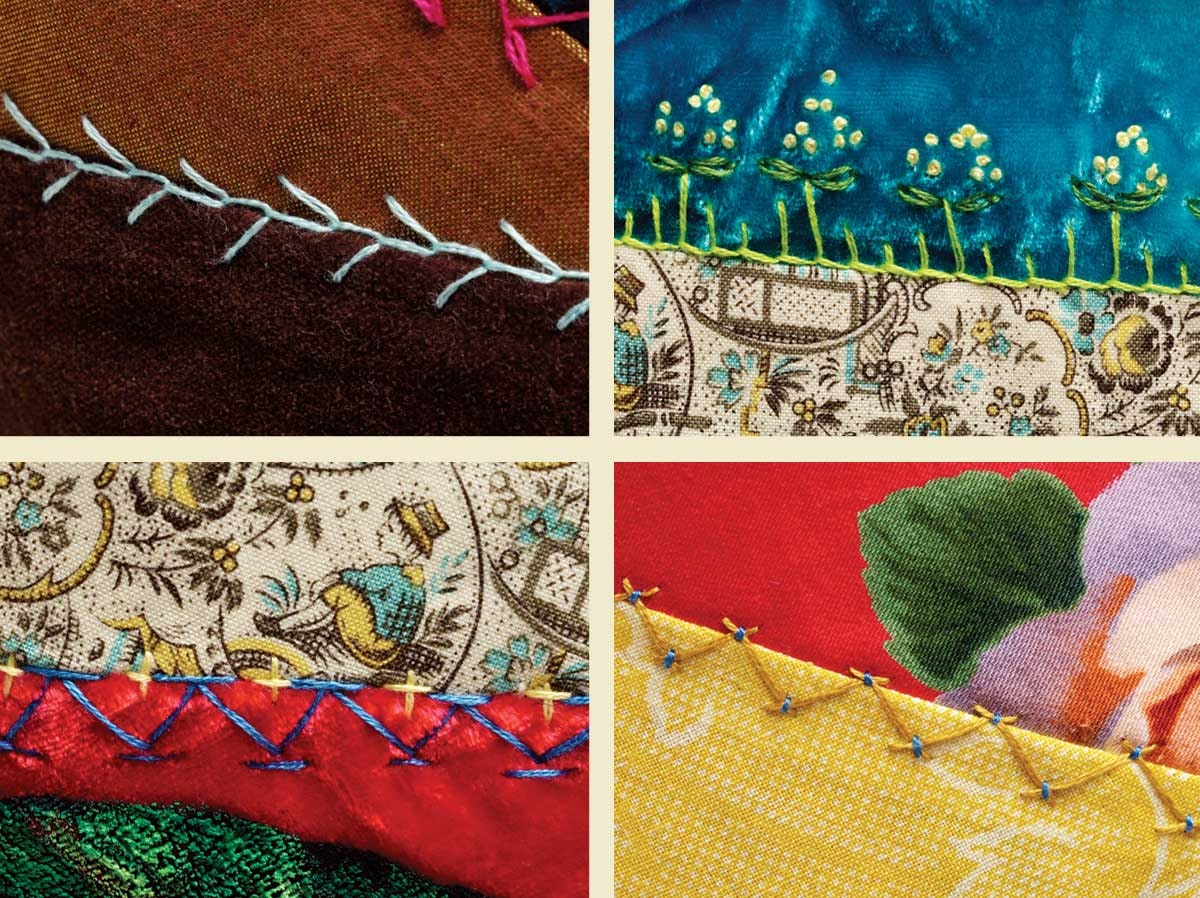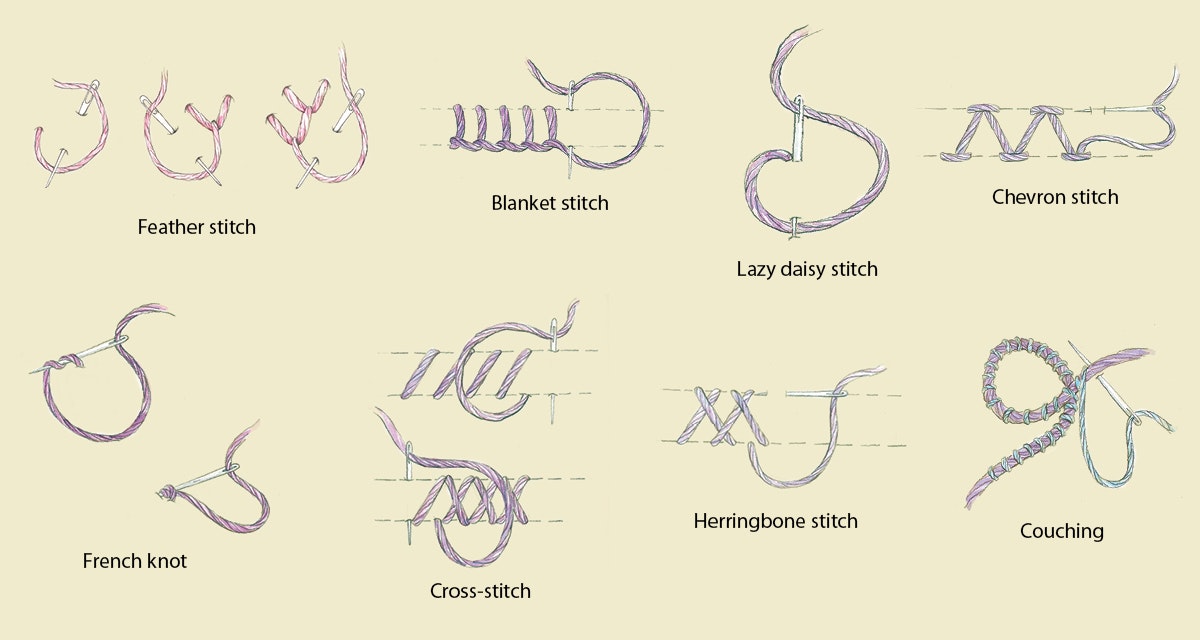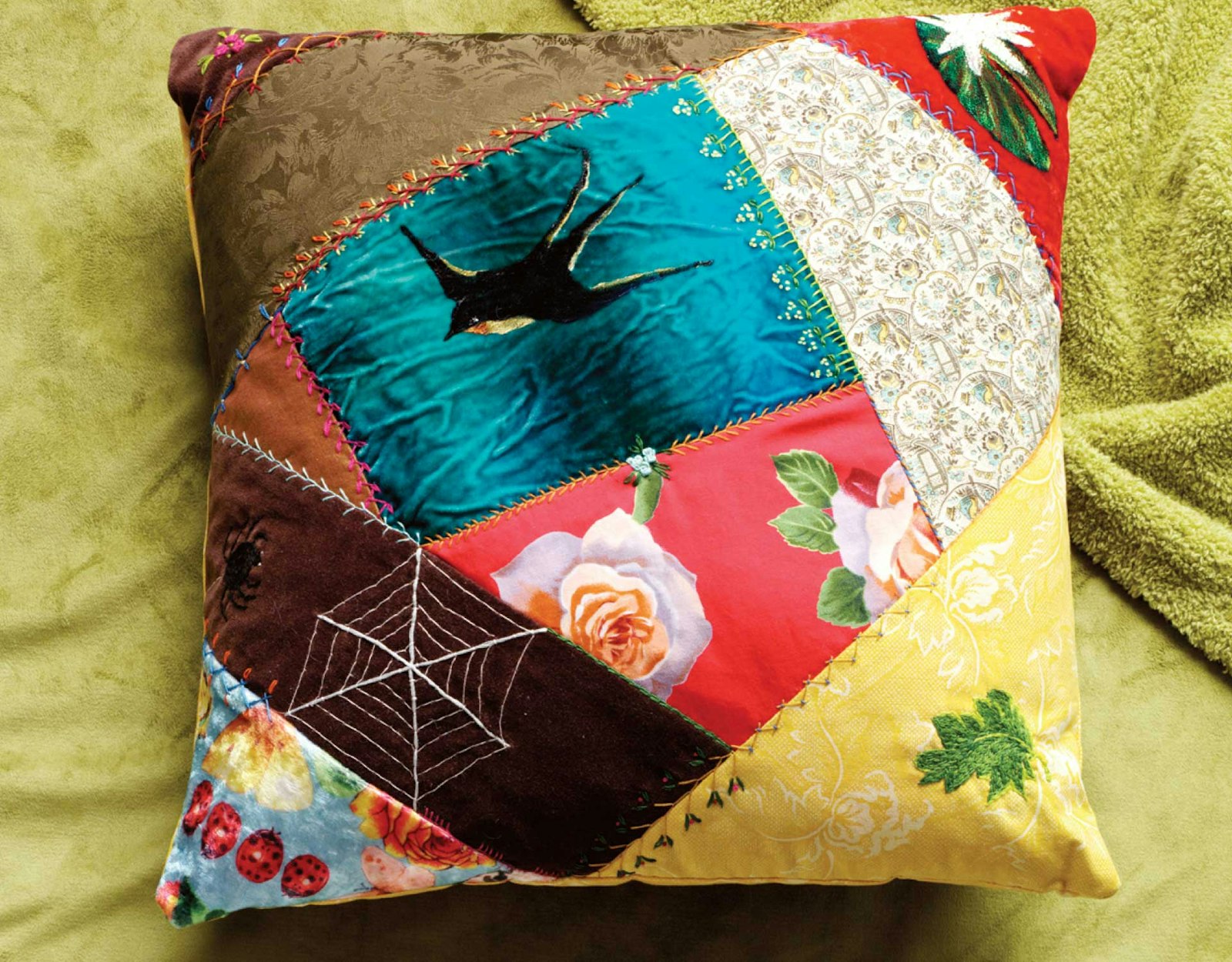Crazy quilts most often are constructed in blocks using the foundation method, in which odd-shaped pieces of fabric are overlapped upon a cloth foundation block, their edges turned under, and the pieces stitched into place. The decorative, ornate, and whimsical embroidery stitches used to cover the seams of the underlying fabrics on crazy quilts provide lots of charm. In addition, many Victorian crazy quilts included embroidered motifs that traced patterns that were woven or printed on the fabric. In crazy quilts, there was no limit to the number of stitches used, the way they were combined, or color and types of threads used.
The paintings on this pillow were done with oil paints directly on silk velvet, as were velvet paintings done in the nineteenth century. Using paints or dyes specifically designed for use on textiles, however, may produce paintings that will last longer and will be less prone to cracking and deterioration.

CLOCKWISE FROM TOP LEFT: An example of feather stitch. An example of long-and-short blanket stitches, lazy daisy stitches, and French knots. An example of herringbone and couching stitches. An example of chevron and cross-stitches. All stitch examples from a crazy-quilt pillow by Linda Moore.
The pillow’s stitches and motifs of a flying swallow, a variety of plants, and a spider in her web (believed to bring good luck to the maker of a crazy quilt) playfully refer to Hans Christian Andersen’s Little Tiny or Thumbelina (originally published in 1835). Fairy tales of all types were popular in the 1880s, at the height of the Victorian crazy-quilt “craze,” and in the early 1880s, several sumptuously illustrated versions of this story were available.

Try the stitches here for embellishing your crazy quilt. To get started, you will need: six-strand cotton embroidery thread in the colors of your choice, and a size 9 embroidery needle (or larger if working on heavy fabrics). Our sample used the following stitches: feather stitch, long-and-short blanket (the vertical stitches vary from short to medium to long and back to short and medium before repeating), lazy daisy, French knots; chevron, small vertical cross; herringbone, and couching.
Linda Moore is curator of collections at Fort Collins Museum of Discovery in Fort Collins, Colorado. Her passion is stitching designs inspired by vintage household linens.
This article was published in the September/October 2006 issue of PieceWork.

